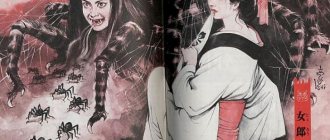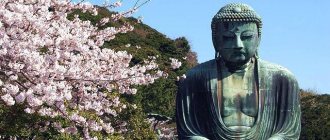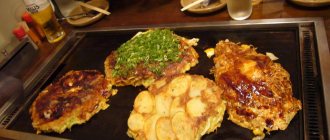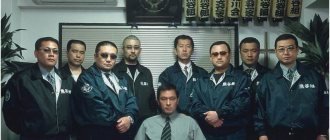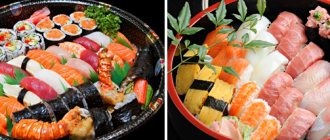Ludovico Einaudi
twitter.com/ludovicoeinaud
The Italian composer and pianist works in the direction of minimalism, often turns to ambient and skillfully combines classical music with other musical styles. He is known to a wide circle for his atmospheric compositions that have become soundtracks for films. For example, you probably recognize the music from the French film “1 + 1”, written by Einaudi.
Kabuki music
Kabuki theater originated in the 17th century, and the performance included dances, which later became a separate genre of performing arts, nihonbuyo . Kabuki music includes 4 main genres of music for shamisen: gidayu, which comes from the fairy tale genre of joruri, tokiwazu and kiyomoto - other styles of joruri, nagauta - lyrical songs performed in the dance part, kage-bayashi - music performed off stage by an ensemble for nagauta and many percussion instruments. Musicians who are not members of the Kagebayashi are located on the stage and are referred to as Debayashi (music on stage). There is also a Hayashi ensemble of three drums and one flute. On the stage there is an ensemble for nagauta, in front of it is a hayashi ensemble, and in front of it there is dancing. The storytellers are located on an elevated platform to the left, and the kiyomoto and tokiwazu musicians are located on additional platforms on either side of the stage. In a special room, screened off from the viewer, there is a kage-bayashi ensemble, where there are especially many percussion instruments (rattles, gongs, bells) and wind instruments. This ensemble performs the sounds of falling rain, snow and creates other necessary sound effects. Also, wooden rattles announce the beginning and end of the performance. Their abrupt sounds are repeated in a staccato rhythm. Wooden rattles are also used as one of the percussion musical instruments during the performance.
Philip Glass
themagger.net
Glass is one of the most controversial personalities in the world of modern classics, who is either praised to the skies or criticized to the nines. He has been playing in his own band, the Philip Glass Ensemble, for half a century and has written music for more than 50 films, including The Truman Show, The Illusionist, Taste of Life and Fantastic Four. The melodies of the American minimalist composer blur the line between classical and popular music.
Symbols of Japanese culture
The first association with Japan is sakura (Japanese cherry). The country has a special ceremony for admiring its blossoms - hanami. The tree is repeatedly sung in Japanese haiku poems. Japanese folk songs reflect the similarity of natural phenomena with human life.
Not inferior in popularity to sakura, the crane is a symbol of happiness and longevity. It is not for nothing that the Japanese art of origami (folding paper shapes) has become popular all over the world. Making a crane means attracting good luck. The image of a crane is present in many Japanese songs. Other symbols are also taken from the surrounding world. The symbolism of Japanese culture is natural symbolism.
Max Richter
latimes.com
Author of numerous soundtracks, best film composer of 2008 according to the European Film Academy and post-minimalist. He won over critics with his first album Memoryhouse, in which Richter's music was superimposed on poetry readings, and subsequent albums also used literary prose. In addition to writing his own ambient compositions, Max arranges works of classics: Vivaldi’s “The Seasons” in his arrangement topped the iTunes classical music charts.
Reply to the post “Recording of Paul Anthony Romero’s concert in Rostov-on-Don”
Hi all! Nimlos is in touch. You may or may not have heard of my recording activities. Previously, with my permission, Paul Romero’s concert in Rostov-on-Don, recorded by me in 2019, was posted on Pikabu with my permission. In addition to this, I decided to make a Soundcloud version with the ability to download all tracks in FLAC format. I won't go on and on about how great Paul is (although he is really great), I'll just share the link with you. All the best and Happy New Year!
Giovanni Marradi
This creator of instrumental music from Italy is not associated with the acclaimed cinema, but is already known as a composer, virtuoso and experienced piano teacher. If we describe Marradi’s work in two words, they would be “sensual” and “magical.” His compositions and covers will appeal to those who love retro classics: the notes of the last century are evident in the motifs.
Japanese folk music: national instruments and genres
Japanese folk music is a rather distinctive phenomenon due to the isolation of the Islands of the Rising Sun and the careful attitude of the people inhabiting them to their culture. Let us first consider some Japanese folk musical instruments, and then the genres characteristic of the musical culture of this country.
Japanese folk musical instruments
The shamisen is one of the most famous musical instruments in Japan; it is one of the analogues of the lute. The shamisen is a three-stringed plucked instrument. It arose from sanshin, which in turn came from the Chinese sanxian (both the origin is interesting and the etymology of the names is entertaining).
Shamisen is still revered today on the Japanese islands: for example, playing this instrument is often used in traditional Japanese theater - Bunraku and Kabuki. Learning to play the shamisen is included in maiko, the training program for the art of being a geisha.
Often fue, like shamisen, is used for musical accompaniment to the actions of Banraku or Kabuki theater, as well as in various ensembles. In addition, some of the fouet, tuned in a Western manner (like chromatic instruments), can be soloed. Initially, playing the fue was only the prerogative of wandering Japanese monks.
Suikinkutsu is an instrument in the form of an inverted jug, over which water flows, entering through the holes, it makes it sound. The sound of suikinkutsu is somewhat similar to a bell.
This interesting instrument is often used as an attribute of a Japanese garden; it is played before a tea ceremony (which can take place in a Japanese garden). The thing is that the sound of this instrument is very meditative and creates a contemplative mood, which is ideal for immersion in Zen, because being in the garden and the tea ceremony are part of the Zen tradition.
Taiko – translated from Japanese into Russian this word means “drum”. Just like drum counterparts in other countries, taiko was indispensable in warfare. At least, this is what the chronicles of Gunji Yeshu say: if there were nine blows of nine, then this meant calling an ally into battle, and nine of three meant that the enemy needed to be actively pursued.
Important: during drummers’ performances, attention is paid to the aesthetics of the performance itself. The appearance of a musical performance in Japan is no less important than the melody or rhythm component.
Musical genres of the Land of the Rising Sun
Japanese folk music went through several stages of its development: initially it was music and songs of a magical nature (like all nations), then the formation of musical genres was influenced by Buddhist and Confucian teachings. In many ways, traditional Japanese music is associated with ritual events, holidays, and theatrical performances.
Of the most ancient forms of Japanese national music, two genres are known: shomyo (Buddhist chants) and gagaku (court orchestral music). And musical genres that do not have roots in antiquity are yasugi bushi and enka.
Yasugi bushi is one of the most common folk song genres in Japan. It is named after the city of Yasugi, where it was created in the mid-19th century. The main themes of Yasugi Bushi are considered to be key moments of local ancient history, and mythopoetic tales about the times of the gods.
“Yasugi bushi” is both the dance “dojo sukui” (where catching fish in the mud is shown in a comic form), and the art of musical juggling “zeni daiko”, where hollow bamboo stems filled with coins are used as an instrument.
Enka is a genre that originated relatively recently, just in the post-war period. In enke, Japanese folk instruments are often woven into jazz or blues music (an unusual mix is obtained), and it also combines Japanese pentatonic scale with European minor scale.
Features of Japanese folk music and its difference from the music of other countries
Japanese national music has its own characteristics that distinguish it from the musical cultures of other nations. For example, there are Japanese folk musical instruments - singing wells (suikinkutsu). You’re unlikely to find something like this anywhere else, but there are musical bowls in Tibet, too, and more?
Japanese music can constantly change rhythm and tempo, and also lack time signatures. The folk music of the Land of the Rising Sun has completely different concepts of intervals; they are unusual for European ears.
Hans Zimmer
twitter.com/coslive
The famous film composer created musical accompaniment for many box-office films and cartoons, including “Gladiator”, “Pearl Harbor”, “Inception”, “Sherlock Holmes”, “Interstellar”, “Madagascar”, “The Lion King” . His star is on the Hollywood Walk of Fame, and on his shelf are the Oscars, Grammys and Golden Globes. Zimmer's music is as varied as the films listed, but regardless of the tone, it touches the heartstrings.
Main song and dance genres
Like other nations, Japanese folk music has undergone an evolution from ancient magical forms to secular genres. The formation of most of them was influenced by Buddhist and Confucian teachings. The main classification of Japanese music genres:
The most ancient genres are considered to be Buddhist chants of shomyo and court music of gagaku. Topics of religious chants: Buddhist doctrine (kada), tenets of teaching (rongi), pilgrimage hymns (goeika), songs of praise (vasan). Shinto music is music to please the gods, short cycles of songs and dances in costumes.
The secular genre includes court orchestral music. Gagaku is an ensemble borrowed from China that performs instrumental (kangen), dance (bugaku) and vocal (uachimono) music.
Japanese folk dances have their origins in ritual performances. The dance involves strange, sudden movements of the arms and legs, and the dancers are characterized by twisted facial expressions. All movements are symbolic and understandable only to initiates.
There are two types of modern Japanese dance: odori, an everyday dance with sharp movements and jumps, and mai, a more lyrical dance that represents a special prayer. The odori style gave rise to kabuki dance, and subsequently the world-famous theater. The Mai style formed the basis of Noh theater.
About 90% of the music of the Land of the Rising Sun is vocal. Important genres of folk music are folk tales, songs accompanied by koto, shamisen and ensembles, and ritual folk songs: wedding, work, holiday, and children's.
The most famous Japanese folk song is the song “Sakura” (that is, “Cherry”):
DOWNLOAD NOTES - DOWNLOAD
Joe Hisaishi
musicaludi.fr
Hisaishi is one of the most famous Japanese composers, having received four Japanese Academy Film Awards for best film music. Joe became famous for composing the soundtrack to Hayao Miyazaki's anime Nausicaä of the Valley of the Wind. If you are a fan of the creations of Studio Ghibli or the films of Takeshi Kitano, then you probably admire Hisaishi's music. It is mostly light and light.
Bunraku music
Bunraku (puppet theater) also developed from popular performances and flourished during the Edo period. The performances are accompanied by joruri recitatives and shamisen accompaniment. The storytellers and musicians are located on a special platform extending from the right (viewer's side) part of the stage. During the performance, only the narrator speaks or sings; he is responsible for all the roles and the main text. The narrator performs his part in three styles: speech (kotoba), tale (jiai) and singing (fushi). These styles alternate, usually the dialogues are performed in kotoba, the narration is told in skaz, and especially emotional moments are highlighted by singing. The narrator can speak either alone or in a group; the narration is conducted either by one narrator or by a choir. Shamisen enters during narration or singing, as well as during pauses. There are special symbols for heroes with certain melodies, so by playing the shamisen you can understand which doll is about to enter and what kind of character it has. The sounds of shamisen convey the emotions of the characters, emphasize the nature of the events taking place, and highlight certain climactic moments.
Olafur Arnalds
twitter.com/theipaper
This Icelandic multi-instrumentalist is just a boy compared to these masters, but by the age of 30 he had become a recognized neoclassicist. He recorded accompaniment for a ballet, received a BAFTA award for the soundtrack to the British TV series “Murder on the Beach” and released 10 studio albums. Arnalds' music is reminiscent of a harsh wind on a deserted seashore.
Yiruma
yiruma.manifo.com
Lee Rum's most famous works are Kiss the Rain and River Flows in You. The Korean New Age composer and pianist writes popular classics that are understandable to listeners on any continent, with any musical taste and education. His light and sensual melodies became the beginning of a love for piano music for many.
Musical instruments
Almost all of the ancestors of Japanese musical instruments were brought to the islands from China or Korea in the 8th century. Performers note only the external similarity of instruments with European and Asian models; in practice, sound production has its own characteristics.
Koto is a Japanese zither, a stringed instrument that represents a dragon. The body of the koto has an elongated shape, and when viewed from the side of the performer, the head of the sacred animal is on the right, and its tail is on the left. The sound is extracted from silk strings using fingertips, which are worn on the thumb, index and middle fingers.
The shamisen is a plucked string instrument similar to a lute. It is used in the traditional Japanese Kabuki theater and is a hallmark of Japanese culture: the colorful sound of the shamisen in ethnic music is as symbolic as the sound of the balalaika in Russian music. The shamisen is the main instrument of traveling goze musicians (17th century).
Shakuhachi is a Japanese bamboo flute, one of the representatives of a group of wind instruments called fue. Producing sound on a shakuhachi depends not only on the air flow, but also on a certain angle of inclination of the instrument. The Japanese tend to animate objects, and musical instruments are no exception. It can take several months to tame a shakuhachi spirit.
Taiko - drum. The tool was indispensable in military operations. A certain series of taiko strikes had its own symbolism. Drumming is spectacular: in Japan, both the musical and theatrical aspects of performance are important.
Singing bowls are a feature of Japanese musical instruments. There are almost no analogues anywhere. The sound of Japanese bowls has healing properties.
Singing wells (suikinkutsu) are another unique instrument that consists of an inverted jug buried in the ground with water placed above it. Through a hole in the bottom, the drops enter and make sounds reminiscent of a bell.
Dustin O'Halloran
fracturedair.com
The American composer is interesting because he has no musical education, but at the same time he writes the most pleasant and quite popular music. O'Halloran's tunes have been used in Top Gear and several films. Perhaps the most successful soundtrack album was for the melodrama “Like Crazy.”
Style features of Japanese music
The modal structure of Japanese music is fundamentally different from the European system. The basis is a scale of 3, 5 or 7 tones. The mode is not major or minor. The intonation in Japanese folk music is unusual to the European ear. Pieces may not have a regular rhythmic organization - meter, rhythm and tempo often change. The structure of vocal music is guided not by the pulse, but by the breath of the performer. This is why it is well suited for meditation.
The lack of musical notation is another feature of Japanese music. Before the Meiji era (i.e. before the arrival of the European recording model in the country), there was a system of notations in the form of lines, figures, and signs. They symbolized the desired string, fingering, tempo and character of the performance. Specific notes and rhythm were not prescribed, and the melody was impossible to play without knowing it in advance. Due to the oral transmission of folklore from generation to generation, much knowledge was lost.
A minimum of dynamic contrasts is a stylistic feature that distinguishes Japanese music. There are no sharp transitions from forte to piano. Moderation and slight variations in dynamics make it possible to achieve expressiveness characteristic of the East. The climax in Japanese tradition occurs at the end of the play.
Roberto Cacciapaglia
culturaspettacolovenezia.it
This composer and pianist knows a lot about both the art of conducting and how to create electronic music. But his main field is modern classics. Cacciapaglia has recorded numerous albums, three of them with the Royal Philharmonic Orchestra. His music flows like water, it’s a great way to relax with it.
Visual kei
A derivative genre of Japanese rock and glam metal that appeared in the mid-80s thanks to the groups X Japan, Seikima II, etc. One of the main principles of the direction is a great emphasis on the appearance of the performers, which is based on the androgynous ideal of beauty. Another feature of the genre is the variety of creativity of the groups. So most bands add elements of many different directions to their music and do not adhere to a clear genre of music. Most bands play rock music, but it also has a strong electronic (Adapter, Blam Honey) and pop (TM Revolution) scene. But almost always the music of such groups contains electric guitar and other elements of rock music.

